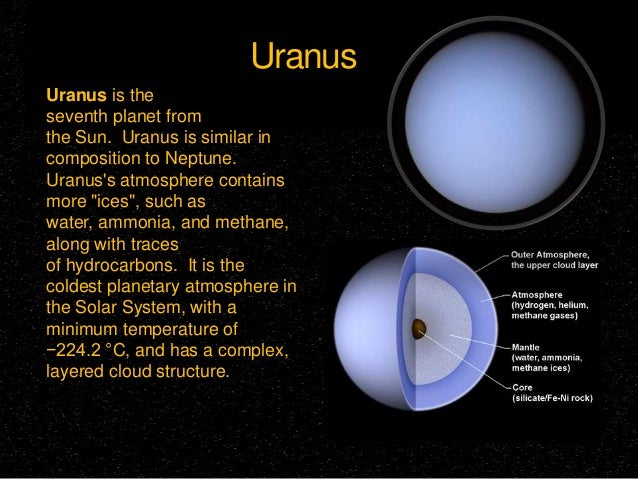
They are not as long lived as the Great Red Spot on Jupiter, but do persist for several months. There appear to be giant storms, comparable in size to the Earth, that travel through the atmosphere at speeds of approximately 1,200 km (750 miles) per hour. The winds on Neptune are the strongest of any planet in the Solar System. The temperature at the core is probably around 5,400K, which is almost as hot as the surface of the Sun. Most of the planet comprises gas and liquefied gasses, but it has a solid core that is believed to weigh about 1.2 times the mass of the Earth. Below this there is a darker cloud layer that is probably hydrogen sulfide. Neptune is bright blue in color due to the frozen methane in its atmosphere similar to Uranus, but a much brighter blue. It is much less dense than the Earth, weighing only 17 times as much, and has a very strong magnetic field. Neptune is four times larger than the Earth with an equatorial diameter of around 49,500 km (30,775 miles). A "day" on Neptune is just over 16 hours long. This is about 30 times further away from the sun than is the Earth. Of the eight planets, Neptune is the only one not visible to the naked eye as it is almost 4.5 billion km (2.8 billion miles) from the Sun, which it orbits about once every 165 Earth years. Johann Gottfried Galle of the Berlin Observatory found it in 1846 from Le Verrier's calculations. It is made of a thick soup of water, ammonia, and methane flowing over a solid core about the size of Earth. Based on observations of Uranus motions, Urbain Joseph Le Verrier calculated where he believed another planet should orbit, and also calculated its mass.


Although Galileo had observed it in 16, he did not record it as a planet but as another star.


 0 kommentar(er)
0 kommentar(er)
